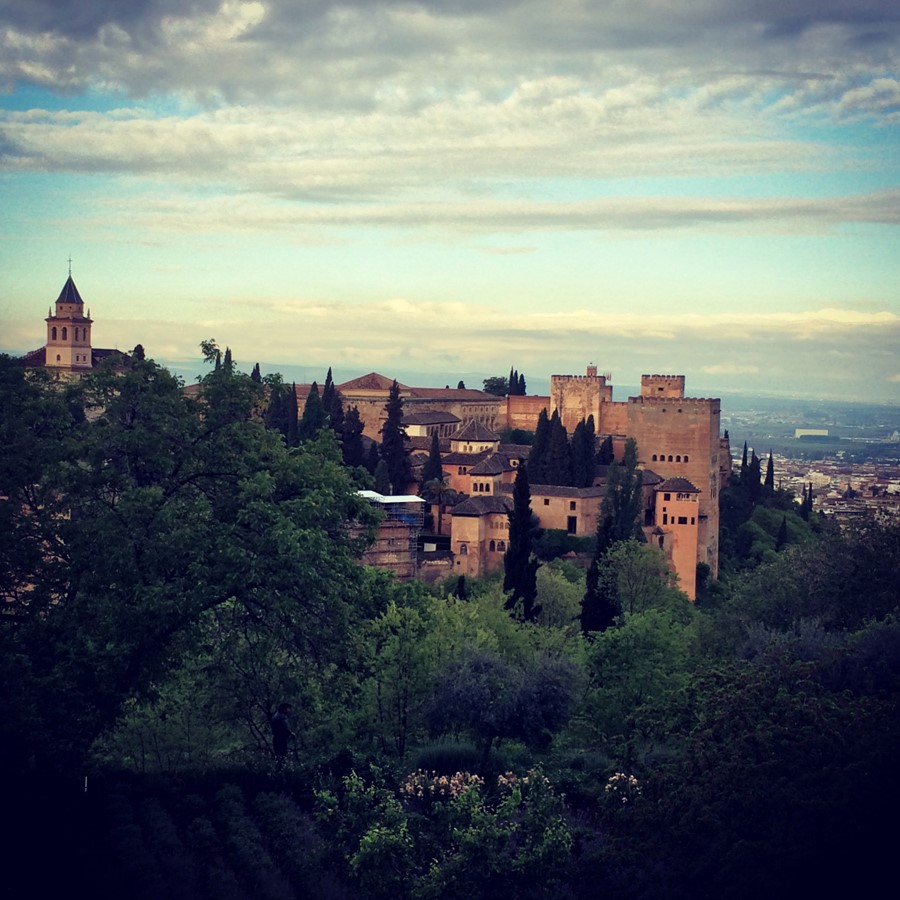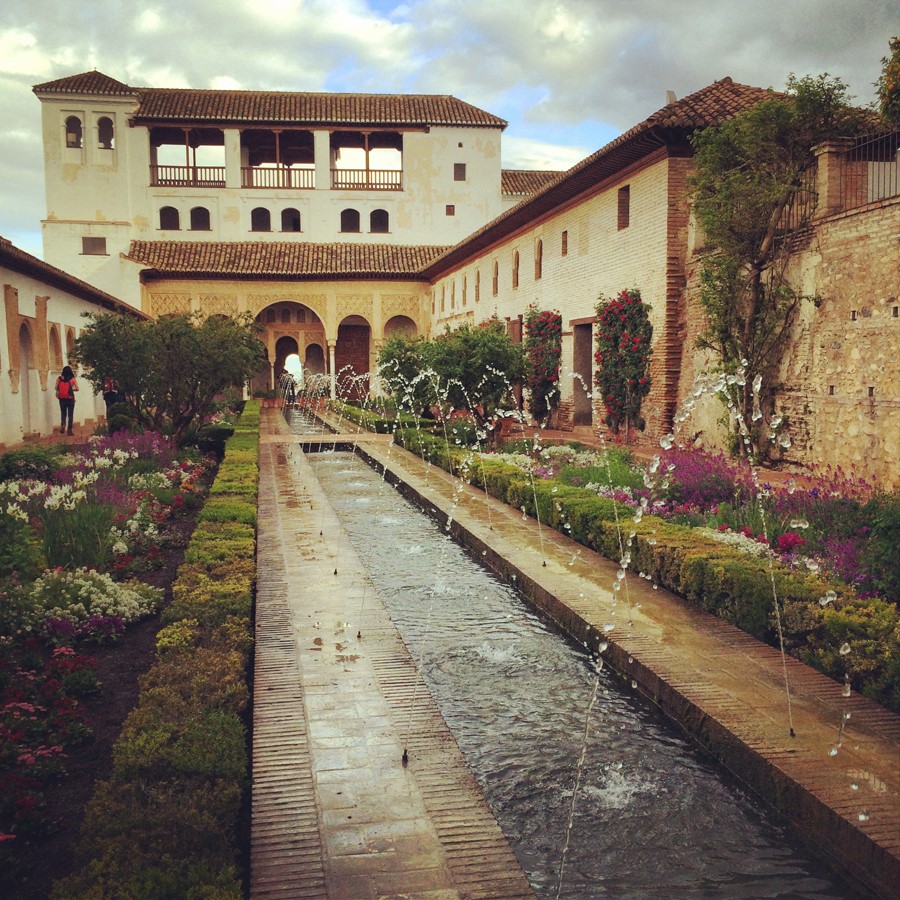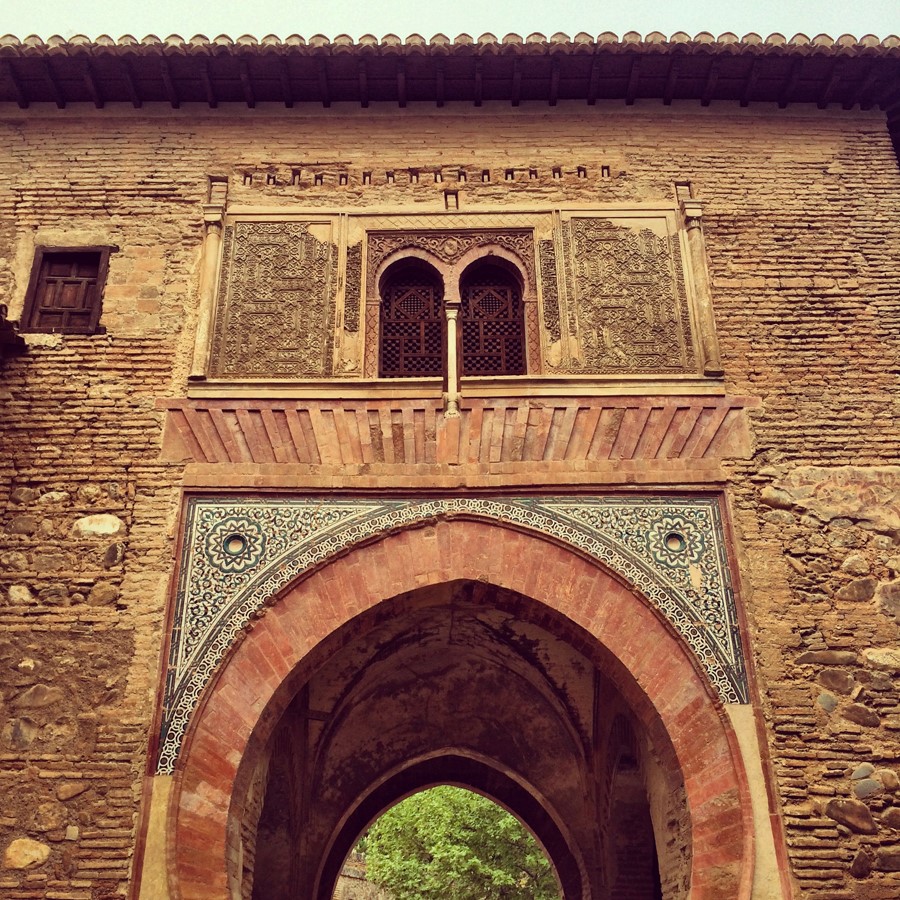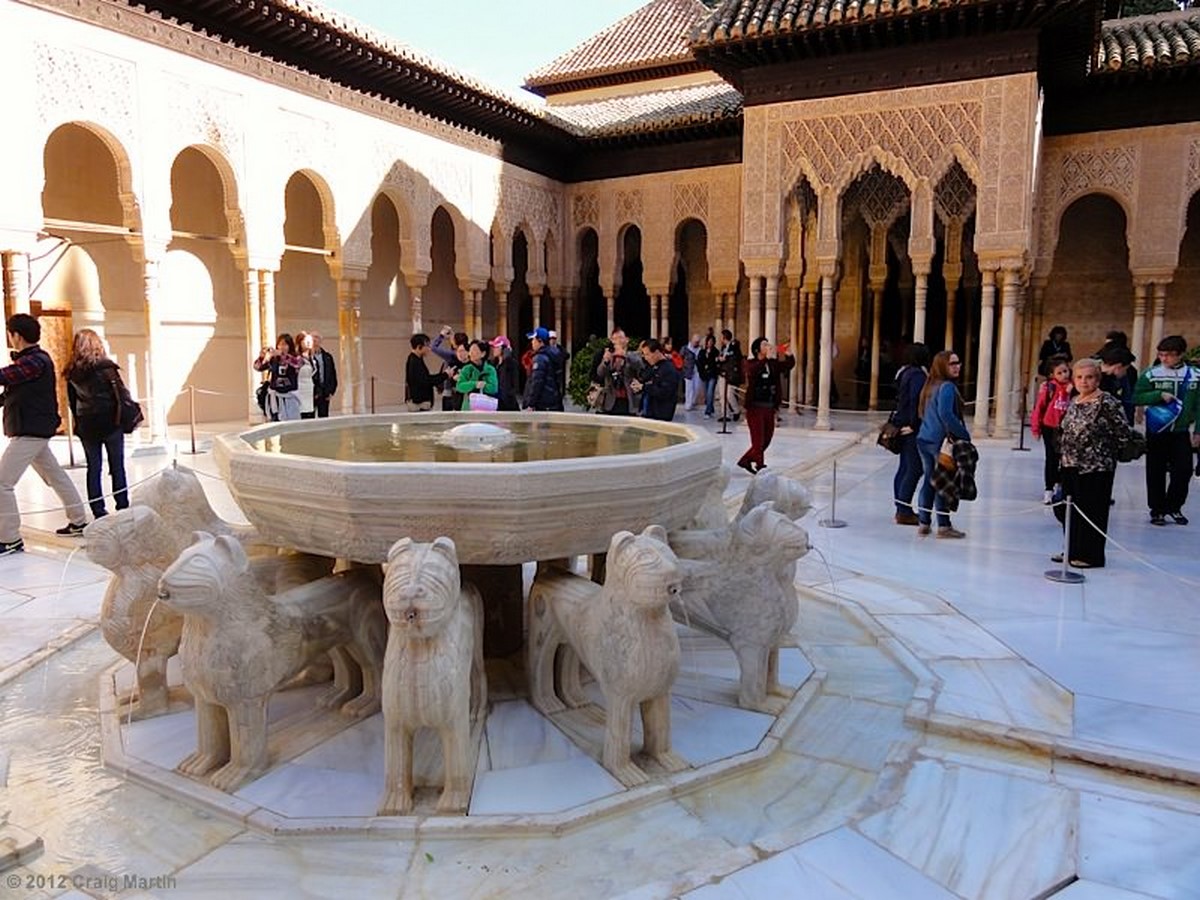The melding of dominant Moorish Islamic and Christian aesthetics makes it fascinating, iconic, and architecturally remarkable. On a hill overlooking Granada, rests Alhambra – a celebrated palace. Surviving major events throughout history, the palace has ephemeral nature and has a synthesis of discrete eras of architectural styles.


This idiosyncratic palace – citadel comprises royal residential quarters, court complexes surrounded by official chambers – commenced its construction in the 9th century. The most acknowledged spaces include a series of courtyards surrounded by rooms enhanced with Moorish arched, columnar, and domical forms. Declared as Europe’s paradigm of Moorish architecture; it got its name from the Arabic linguistic which notes itself as ‘Crimson Castle’. This is so because the red color was prominent during its initial times and juxtaposed the backdrop and formed an expressive silhouette.
The melding of dominant Moorish Islamic and Christian aesthetics makes it fascinating, iconic, and architecturally remarkable.


Moorish architecture is an architectural tradition that is noticeable largely in mosques and fortifications where the Alhambra took an authoritative stand. An articulated part of characteristic elements of muqarnas, horseshoe arches, domes, courtyards, and decorative tile work. The flourishes, arches, curves, and arabesques that so enlivened Arabic composition influence every structure and space portrays effectively in Alhambra palace; setting a stage for Islamic Architecture.
The Alhambra that we see today is not made by a single ruler or leader. Instead, it was a process of passing on the batten to many centuries. Collectively with the passage of time, making it a timeless piece of architecture.
Having the defensive characteristic from the exterior, the palace can be accessed through 4 main gates. With 3 main sections rooted during its province, it included a residence for the ruler and close family, Alcazaba- a military base that housed guards and their families and the Medina where the court officials reside. All the different parts of the entire complex were connected using paths, gardens, and gates. Also, the planning provided the choice of restricting the circulation after each main complex. As compared to the exterior, the interior spaces collocated with high ornamentation and intricate details. One of the most celebrated places includes the Nasrid palace, with reflecting pools, geometric patterns, Arabic inscriptions, painted tile, and the alabaster fountains being the highlight.
Not only was the gemstone in the city, the Alhambra meant to be the core of political power, with the Nasrid Palace being the heart. Being the royal residence, the Nasrid palace was meant to impress even after its prolonged period of neglect; it worked like a charm on most visitors. It was its intimate spaces that were engineered at the anthropological scale leaving the visitors in awe. People even appreciated its decorative muqarnas, lattice windows, delicate arabesques, ornamentation, and its ravishing fountains.
The newly constructed Charles palace emits majesty and power; its size, symmetry, proportions, lack of exuberant ornamentation suggests reverence, dignity, and authority. The sheer majesty of the Nasrid palace can be viewed as a source of power. It is effortless to imagine the breath-taking impression imprinted on the faces of visitors which could be translated into respect for the owner of such splendor.
Adding an everlasting impression of power on the guest, it was to develop a sense of unpredictability and a sense of mystery regarding the presence of the ruler. The labyrinth layout fulfills the equation. These included narrow passages, dead ends, blind alleys, and odd angles. Visitors would be confused and disoriented. The ruler determined the route to be taken, thereby securing power in hands.
The Alhambra monitored the Nasrid dynasty for almost 250 years ranging from 1230 to 1492 and later resisted the War of Granada in 1492, where the Catholic Monarchs conquered Granada. Looking back in time during its prime, the 2 mega sectors of Alhambra were Alcazaba- military zone and the Nasrid Palaces- residences. From the rule on Catholic Monarchs, Charles V ordered to demolish the part of the complex to build the palace which bears his name. The palace was later abandoned in the 18th century and went under adaptive reuse after the 19th century until today. Constructed initially for military purposes, the Alhambra incorporated a fortress, a palace, and a small medina, all at the same time. The triple character helps us to understand the characteristics of the monument. It is Alhambra’s rare patrimony which lifts the historical importance of the place, making it architecturally iconic.
With Catholic Monarchs in rule, the medieval city of Granada was repopulated into a more Catholic character. The Spanish utilized the deconstruction and reconstruction of architecture to a new cultural identity and influence society. In this process, all the mosques were transformed into cathedrals which were transformed into the cityscape. Borrowing an example of Santa Fe, its new design opens up to a new vantage point from which monumental buildings act as terminating vistas and the squares developed intermixed with the streets and oriented around main intersections. Hence, Alhambra was the prominent urban landmark of the city and was considered as the main axis for the city’s establishment throughout history and was the main motive for urban transformations.


The present administration is leaving no stone unturned to maintain this Moorish paradise. Much of the original skin of the building was lost over centuries. Yet, Alhambra becomes one of the best-preserved palaces showcasing Moorish Architecture and remains one of the most popular tourist attractions in Spain with 8500 footfalls every day with the honor of tagging as a World Cultural Heritage site.











